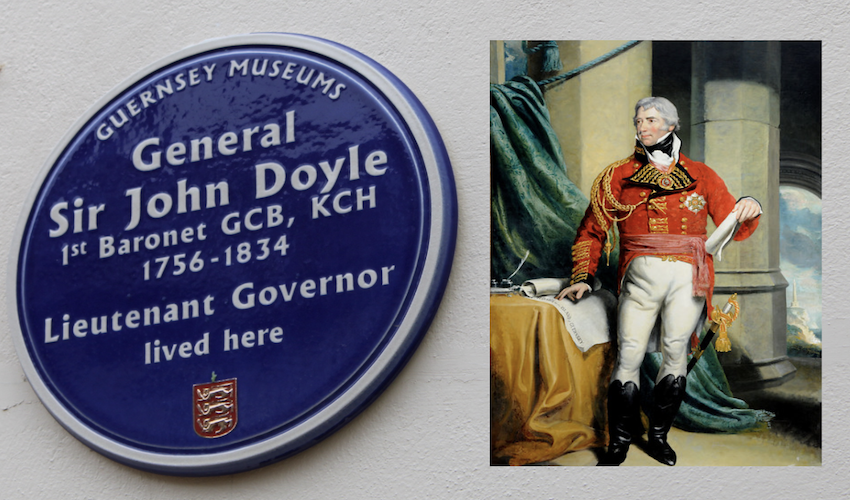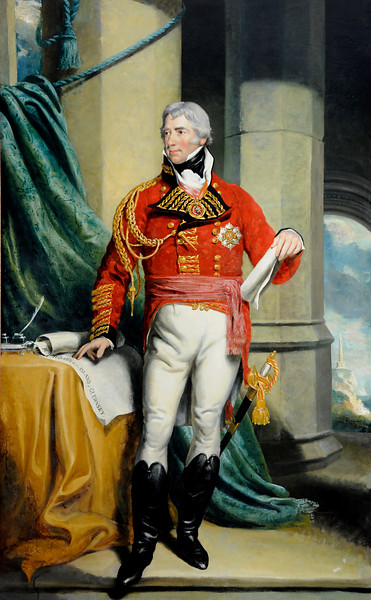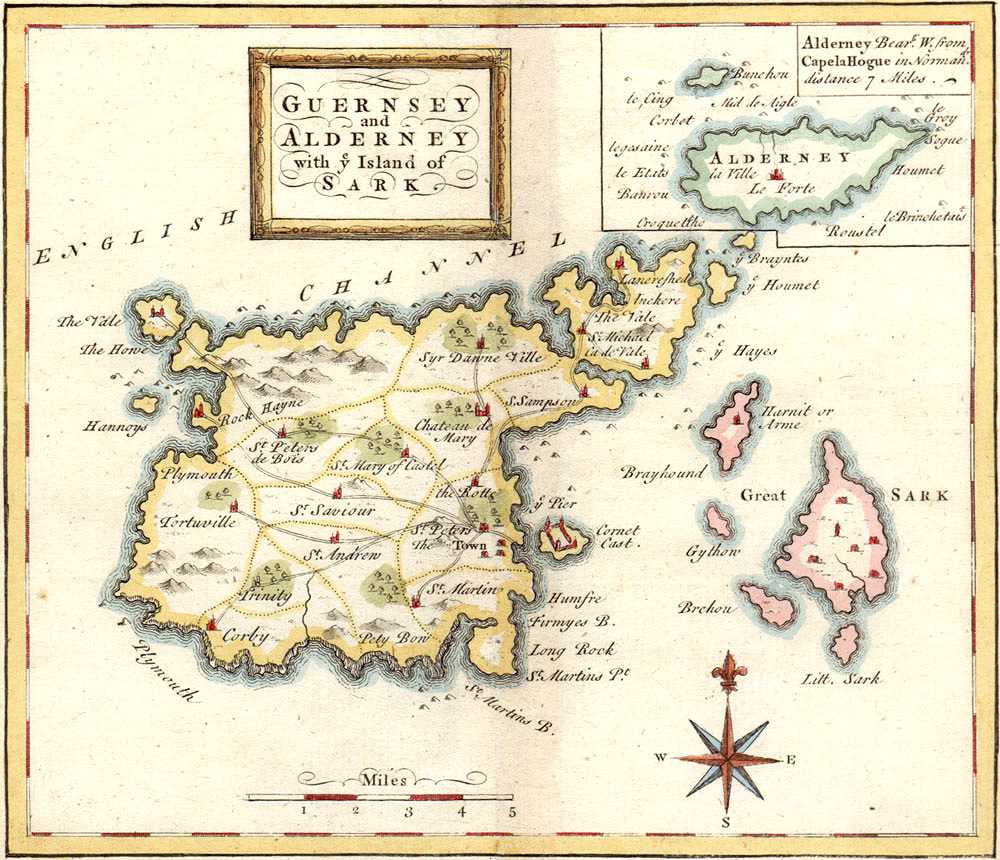


When General Sir John Doyle led the reclamation of the Braye du Valle, he probably never thought he would one day be compared to a pop star such as Taylor Swift.
The former Lieutenant Governor of Guernsey was honoured on Friday with the unveiling of a blue plaque at the entrance to the Old Government House Hotel, where he lived during his time in the island.
The blue plaque was unveiled by the Bailiff, Sir Richard McMahon - who pondered whether those in awe of Sir John's achievements should be called 'Doylies' as fans of Taylor Swift are called 'Swifties'.
Pictured (l-r): Sir Richard McMahon; Bailiff, Helen Glencross; Head of the Museums Service, Deputy Sue Aldwell, and Andrew Chantrell; Manager of the OGH.
Deputy Sue Aldwell, who had nominated Sir John for the Blue Plaque Scheme, and who sponsored the plaque itself, also spoke to Express about her admiration for all of his work.
“The Blue Plaque Scheme is all about recognising people crucial to Guernsey’s history, and Sir John Doyle is certainly one of those," she said.
"In many ways, he shaped the island we live on and love today. As well as filling in the Braye du Valle, Sir John also built new roads, gun batteries and forts as part of a major defence plan. His projects were not without opposition either, with a huge public meeting held in Town Church where he managed to charm the crowd into voting in favour of his plans.”
As well as his widely known work on the reclamation of the Braye de Valle, Sir John was highly decorated in the military. Her served through the American War of Independence, the French Revolutionary Wars, and the Napoleonic era.
Pictured: The Bailiff unveiling Guernsey's latest blue plaque.
The plaque is the latest addition to the ways in which Guernsey commemorates its former Lieutenant-Governor.
Previous dedications include: the Doyle Monument at Jerbourg Point, Doyle Road, Fort Doyle, Doyle Street, Doyle Lane, Doyle Close and The Doyle – (previously the site of Doyle Barracks).
Born in Dublin, Ireland in 1756, John Doyle studied law at Trinity College Dublin from July 1768.
When his father died in March 1771 he joined the army.
He is described as having "served with distinction" in the American War of Independence (1775–1783". Following the peace agreement in America in 1782, Captain Doyle returned to Ireland, entering politics.
He was elected as a Member of Parliament in the Irish House of Commons in 1783 where he progressed to serve as Secretary of War in Irish politics from 1796 until 1799.

Pictured: Oil on canvas portrait of Lieutenant-General Sir John Doyle, Baronet, G.C.B., K.C. also shows the Doyle Column in the background and a plan of the 'Roads of the Island of Guernsey'.
When France declared war on Great Britain, in September 1793, Doyle raised his own regiment, the 87th (The Prince of Wales's Irish, later the Royal Irish Fusiliers) Regiment of Foot; they were also known as The Prince of Wales Irish Heroes.
Doyle served in France, the Netherlands, Gibraltar, and Egypt. His military service led to his appointment as Lieutenant Governor of Guernsey in 1803, after the resignation of his predecessor, Sir Hew Dalrymple.
Sir John was already stationed in Guernsey with the garrison at the time.
Thanks to his military background, Sir John understood the potential threat of French invasion to the island and he immediately declared a 'state of emergency' which remained in force until Napoleon’s defeat in 1815.
In 1806, Sir John led the plans to reclaim the Braye du Valle.
Prior to this time, Guernsey was in two parts.

Pictured: From Wikipedia HERE.
The Braye du Valle tidal estuary would fill at high tide, isolating the northern part of the island – then called the Clos du Valle - from the main island.
Sir John felt this was a weak point in the island’s defences as a French landing on the Clos du Valle would provide invaders with a readily defendable position from which to strike at the rest of the island. The separation by water would also delay any defending forces from accessing the Clos du Valle.
The ambitious engineering project to reclaim the Braye du Valle from the sea was underway by March 1806 when the contract to build dams at either side of the Braye was put out to tender.
Within two years it had been completed.
The reclamation of the Braye de Valle also helped Sir John complete other engineering projects he envisioned such as building new roads.
When reclaimed land around the Braye was sold off, the money was spent on laying two new roads - from St Peter Port to L'Eree and Vazon.
Sir John was also credited with strengthening Guernsey's military might. He brought his nephew Colonel John Doyle to the island to act as a militia inspector, and offered more training and equipment.
Pictured: The blue plaque in honour of Sir John Doyle is at the entrance to the OGH Hotel, which was his personal residence when he lived in the island.
While Sir John often faced opposition over some of his ideas, there were protests and local petitions for him to stay when it came time for him to leave.
He was presented with gifts when he left after being recalled to England.
He returned to island waters in 1823, but didn't come ashore, before returning in 1826 for a visit which included stepping ashore.
General Sir John Doyle, 1st Baronet GCB, KCH, died in London in August, 1834.
Comments
Comments on this story express the views of the commentator only, not Bailiwick Publishing. We are unable to guarantee the accuracy of any of those comments.